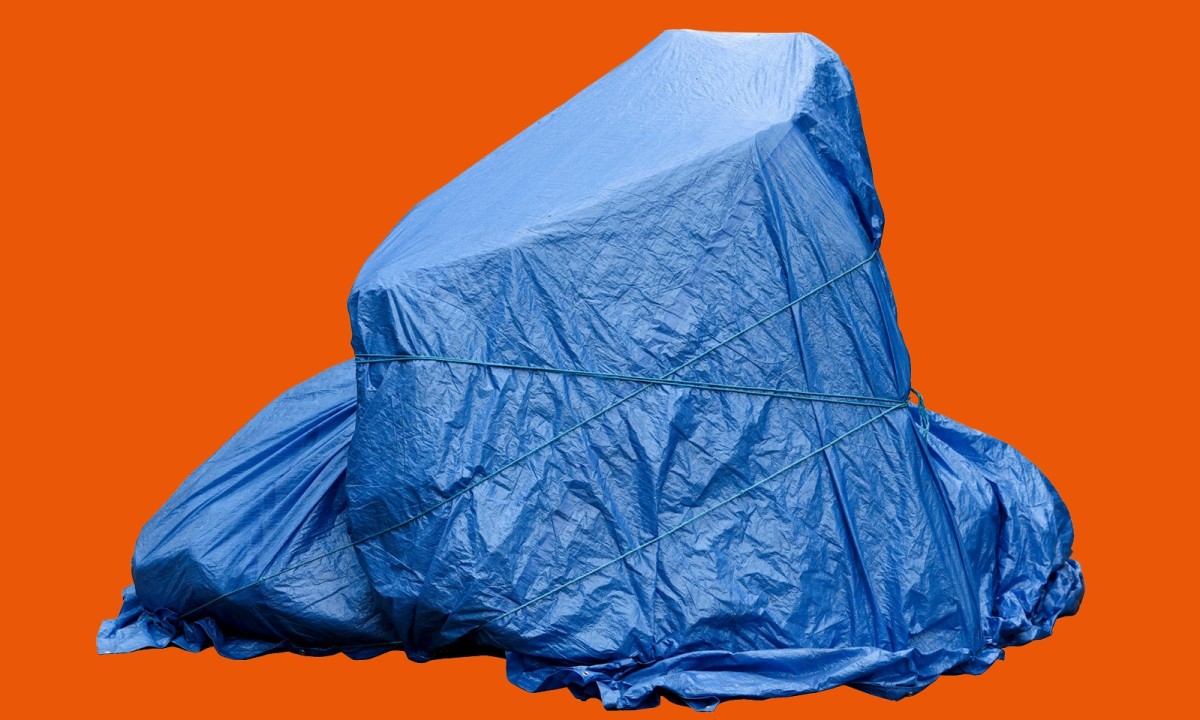This post is the original version of Mitchell G. Ash’s response in the intervention “No Room for Discussion? An Intervention about the World since October 7, 2023,” which is on view at Museum Dorotheergasse until September 14, 2025.
06. June 2025
Close up
Hyde Park and Herzl – Reflections on Public Memorial Culture.
by Mitchell G. Ash
Was it right for the Hyde Park Police to cover the Shoah memorial there as they did? The fact that Jewish groups protested, and the reasons they presented for their protest, tell us that these groups and their members regard the Shoah memorial as a symbol of public recognition of Jewish suffering as well as an orientation point for their own identity. Obviously, there is nothing wrong with that. However, the fact that the memorial stands in Hyde Park, one of the most public places in London, suggests that such memorials cannot and should not be regarded only as the intellectual or psychological possession of any single group, but rather as warnings to humanity as such. In any case, in the politics of public memory, intellectual or psychological property claims have always been difficult to maintain. Certain sites, such as the memorial in Vienna’s ninth district, where the names of all known Austrian Shoah victims have been inscribed, commemorations of the Shoah take place, and state visitors are often taken for special ceremonies, may be exceptions to this claim, because it is clear that they are dedicated to this purpose and no other. In any case, security cameras are located there to deter potential vandals.
The Hyde Park police stated in response to Jewish protests that they had covered the monument because they feared that it could be vandalized in connection with so-called pro-Palestinian demonstrations against the war in Gaza. Whether evidence existed for this claim in the form of concrete, believable threats is unclear. In theory, the police might well have stationed forces around the Shoah monument to prevent attacks on it, rather than covering it over. One can imagine, however, how difficult it would be to provide such intensive police protection twenty-four hours a day over several days. In any case, contrary to critical media coverage of this incident at the time, the fears of the police may well have been justified. Two examples from Vienna support this suggestion.
The Hyde Park police stated in response to Jewish protests that they had covered the monument because they feared that it could be vandalized in connection with so-called pro-Palestinian demonstrations against the war in Gaza. Whether evidence existed for this claim in the form of concrete, believable threats is unclear. In theory, the police might well have stationed forces around the Shoah monument to prevent attacks on it, rather than covering it over. One can imagine, however, how difficult it would be to provide such intensive police protection twenty-four hours a day over several days. In any case, contrary to critical media coverage of this incident at the time, the fears of the police may well have been justified. Two examples from Vienna support this suggestion.
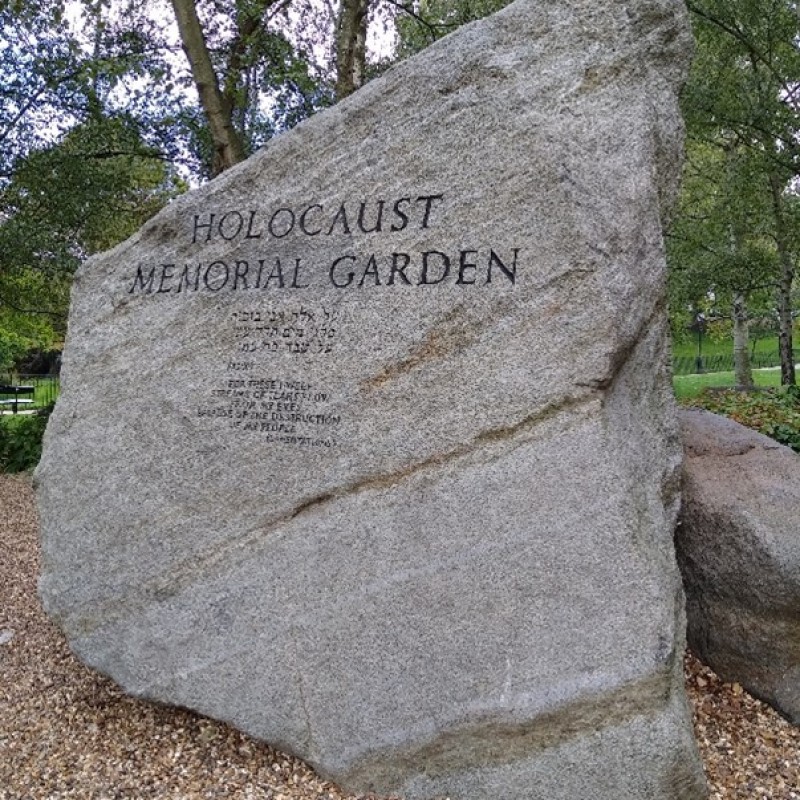
© Wikimedia Commons
The uncovered Holocaust Memorial in Hyde Park, London, 2020
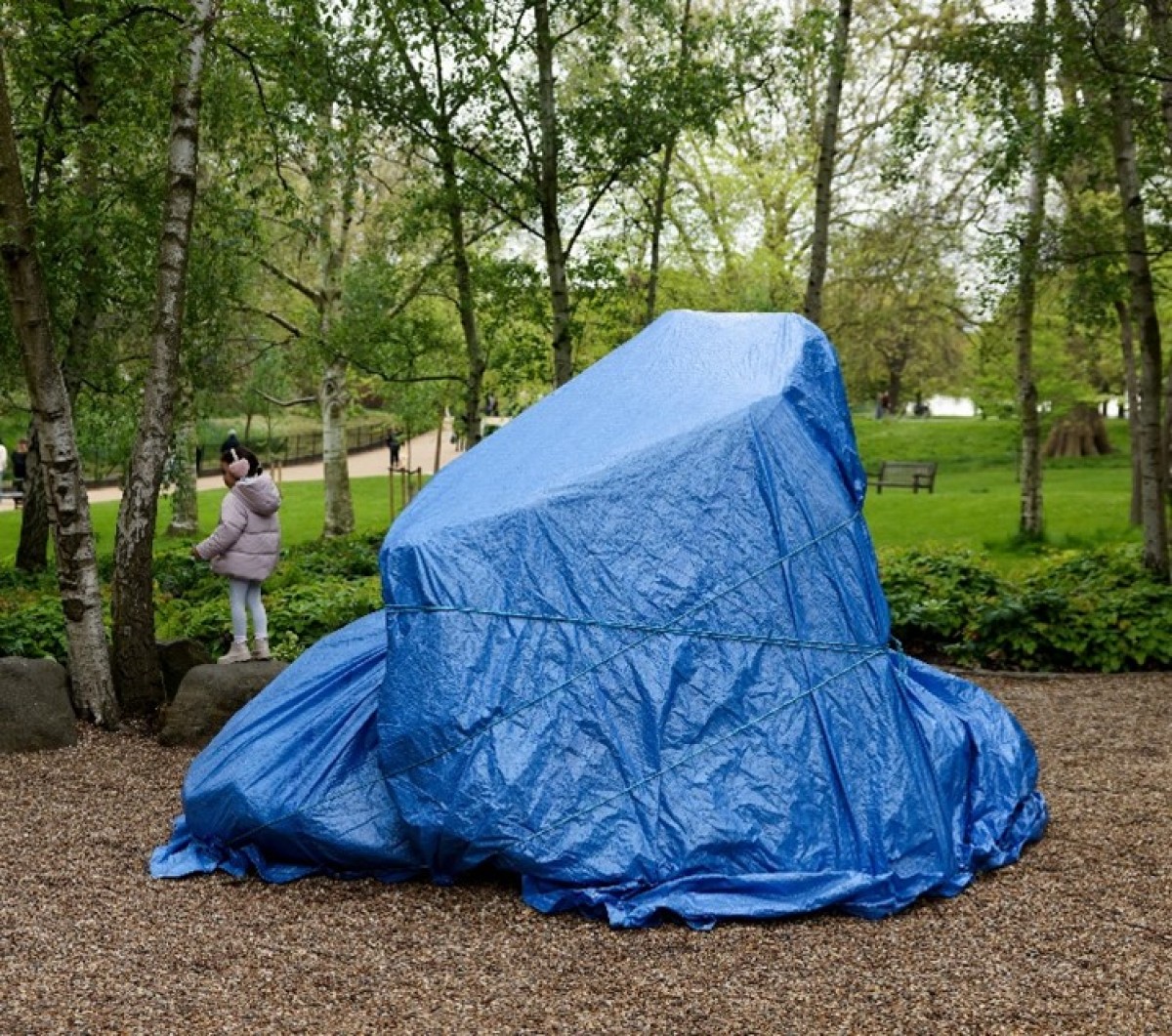
© Hollie Adams/REUTERS/APA picturedesk.com
On April 27, 2024, Royal Parks Authorities covered the Holocaust Memorial monument in Hyde Park to protect it from potential vandalism during a Palestinian solidarity demonstration.
The first example is the vandalizing of the so-called “Herzl Stairs” in Vienna. These are stone steps leading from Sterngasse to Desider Friedman Platz, near the headquarters of the Vienna Jewish Community organization. On a stone wall next to the stairs stands a stone plaque honoring Theodor Herzl, the founding thinker of Zionism, who lived and worked in Vienna. On the night of September 21, 2004, masked people wrote the slogan “Stop Zionism. Victory for Intifada” on the walls, smashed the plaque commemorating Herzl, and escaped before they could be apprehended. Videos of their action taken by accomplices appeared online shortly thereafter. Though the attack was reported immediately to the local police, the perpetrators were not apprehended.
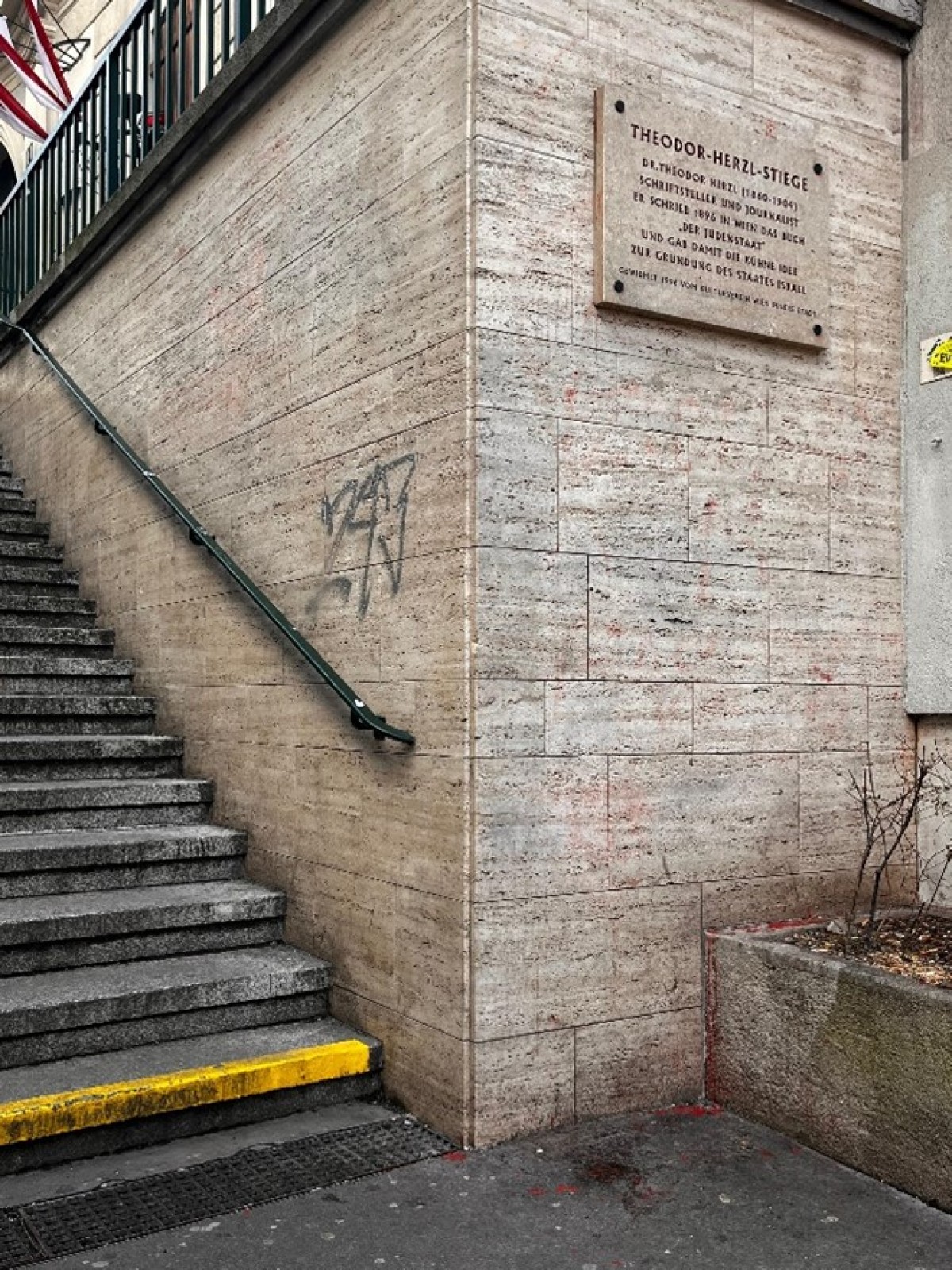
© Violeta Villacorta Apaza, JMW
The “Herzl Stairs,” Vienna, 2025
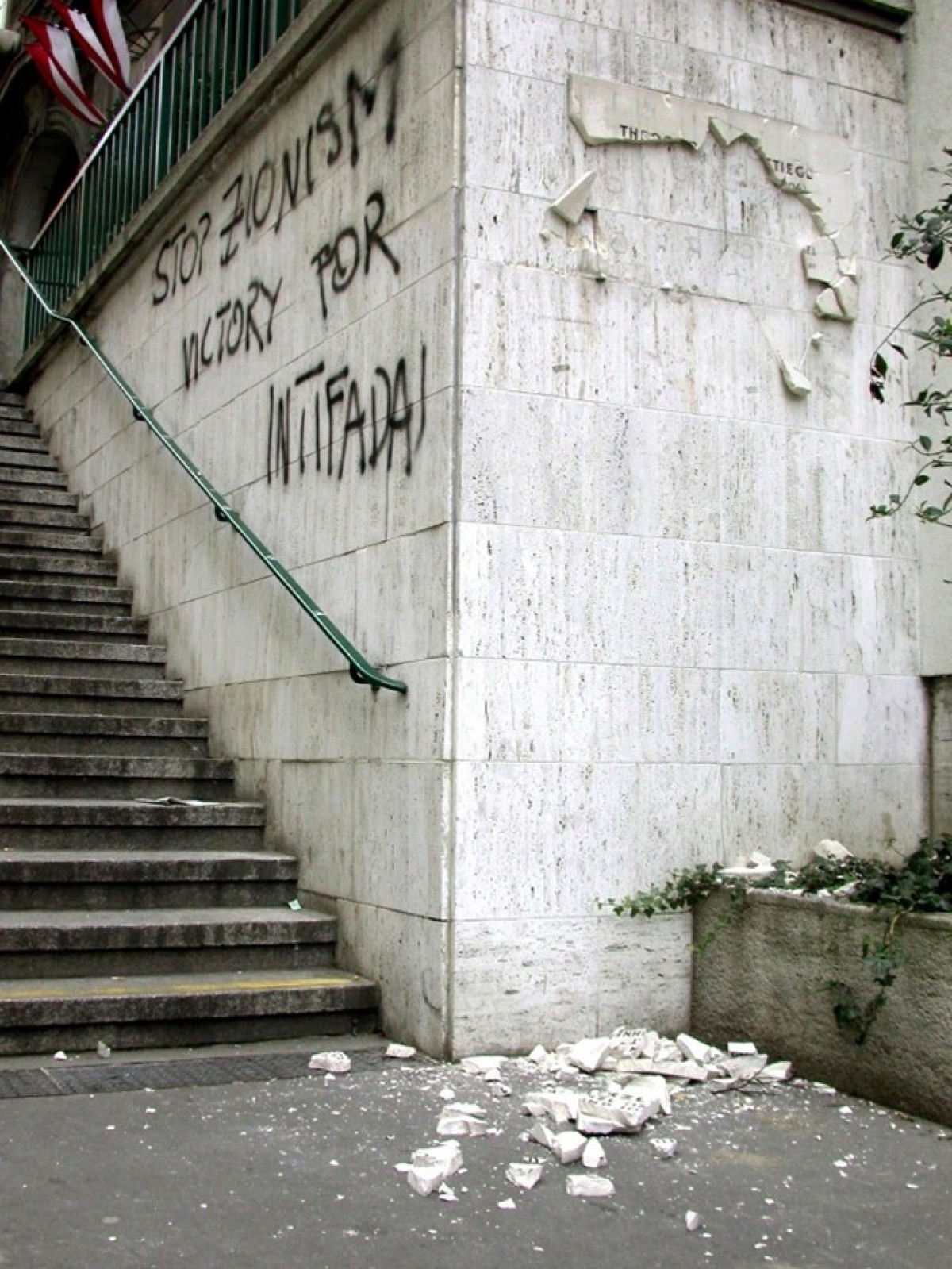
© Günter R. Artinger, APA picturedesk.com
The vandalized “Herzl Stairs,” Vienna, 2004
The second example is another attack on a monument to Herzl. On November 24, 2024, the large plaque placed on the building where Herzl once lived and worked in Vienna’s Berggasse was smeared with red paint, identified as “blood” by the perpetrators. The second attack was named as an example of the threat to Jewish life in Vienna at a symposium held at the Diplomatic Academy Vienna three days later, on November 27, 2024, to commemorate the 120th anniversary of Herzl’s death, entitled “Remembering What Herzl Stood For: The Past and Future of Zionism.“ The symposium was organized by the Center for Israel Studies Vienna, an independent civil society association, of which I am president. Two days before the event, protesters demanded its immediate cancellation. In response, the Director of the Diplomatic Academy called in security forces to protect the hall. He noted the attacks on the Herzl memorials in his words of greeting at the event itself, and this was acknowledged by a representative of the Embassy of Israel in his own greeting. The protesters later posted polemical videos against the event, one of which included an approving link to the video of the vandalism against the Herzl Steps.

© Violeta Villacorta Apaza, JMW
The Herzl memorial plaque on Berggasse, Vienna, 2025
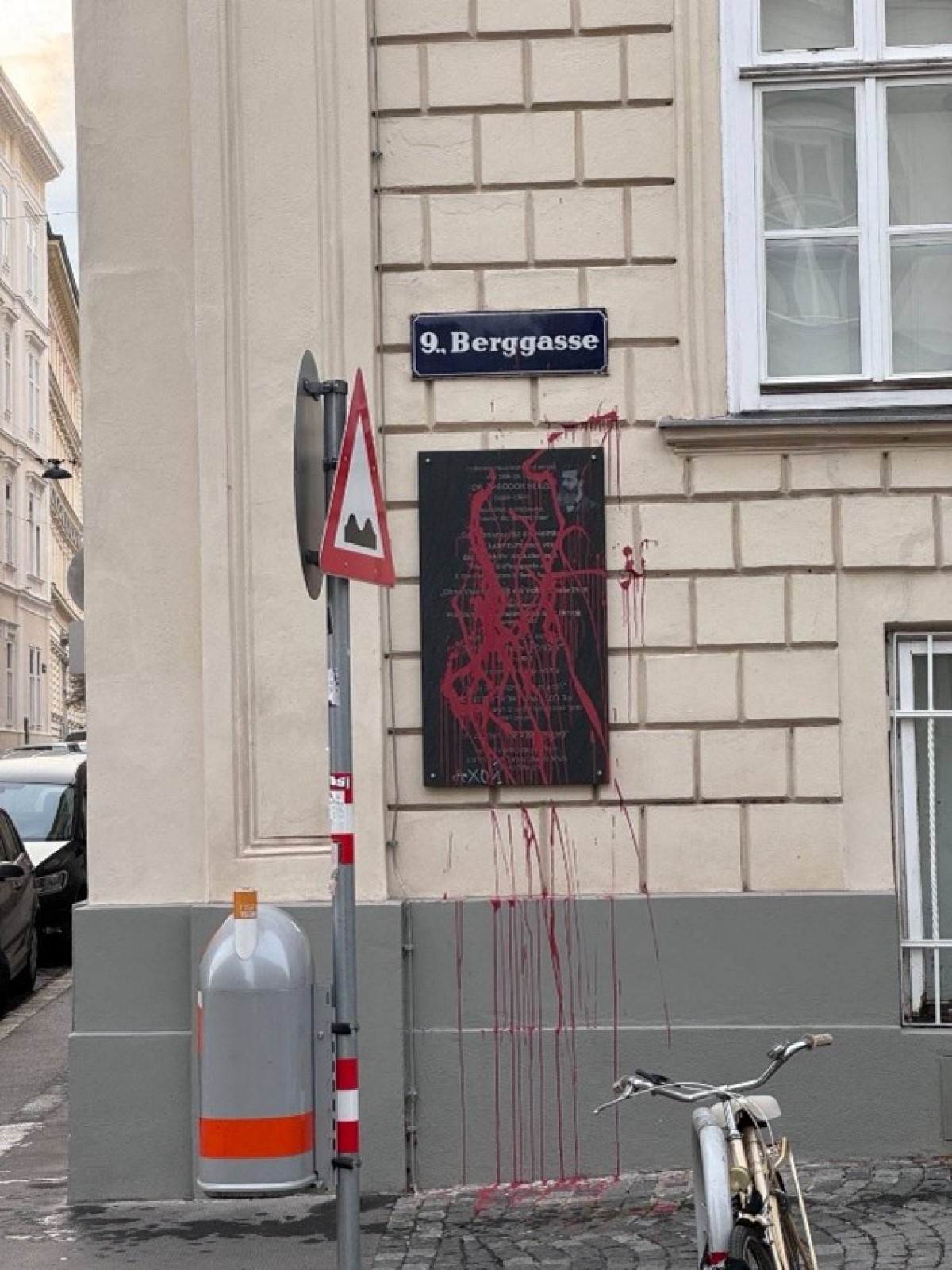
© IKG Antisemitismus Meldestelle Wien
The Herzl memorial plaque on Berggasse vandalized with red paint, Vienna, 2024
The Herzl monuments were quickly repaired. To my knowledge, no one has proposed that these monuments or any Shoah commemoration site in Germany or Austria should be covered or in any way removed from public view, except perhaps as part of an artistic initiative intended to reinforce the commemoration. In any case, the covering of the monument in Hyde Park was temporary, so it cannot be equated with the damnatio memoriae inflicted on public monuments to slaveholders in Great Britain, which have been damaged and in one case thrown into a river. The public discussion of how to deal with places and objects of memory will surely continue to be controversial, precisely because such places and objects are located in the public sphere, in which, as stated above, exclusive intellectual or psychological property rights are difficult if not impossible to maintain. The time when Shoah memorials might be ignored by passersby the way monuments to long-forgotten nobles and princes mounted on huge horses are ignored in Vienna today, may never come. And that would be a very good thing!
